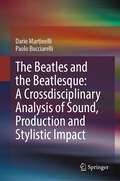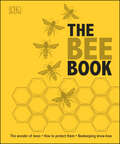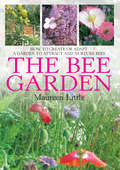- Table View
- List View
The Banker's Wife: The addictive thriller that will keep you guessing
by Cristina AlgerSoon to be adapted for TV by Amazon and the makers of Homeland'An exciting journey into the dark under belly of the ultra-rich world of banking' The Times'Immersive, satisfying, tense - and timely: This is probably happening for real right now' Lee Child**********Two women who have lost so much.Two women with so much more to lose.Annabel - her husband has died in a plane crash. But was it really an accident?Marina - her editor has been found murdered. Is it a coincidence that he was working to expose a huge banking scandal?Two women who will stop at nothing to find out the truth.But the truth is not always what it seems.**********Praise for The Banker's Wife'Alger delivers an addictive dose of suspense and intrigue with a surprisingly believable plot' USA Today'A knockout of an international thriller' Chris Pavone, author of The Expats'One of the best thrillers you'll read all summer' Hello Giggles'A gripping, twisty thriller that asks how well we really know the people closest to us' Alafair Burke, author of The Wife
The Bar Code Rebellion (The Bar Code #2)
by Suzanne WeynThe second book in the action-packed Bar Code series.They want your identity. They want your freedom. They can't have them. The bar code rebellion.Kayla has resisted getting the bar code tattoo, even though it's mean forfeiting a "normal" life. Without the tattoo, she's an exile. But she can't stay an exile for long. . . .For reasons she doesn't completely understand--but will soon discover--Kayla is at the center of a lethal conspiracy that will soon threaten the very notion of freedom. Kayla can either give in to the bar code, or she can join the resistance and fight it. The choice, for her, is clear: It's time to fight.They want your identity.They want your freedom.They can't have them.The bar code rebellion.
The Bar Code Tattoo (The Bar Code #1)
by Suzanne WeynIndividuality vs. conformity. Identity vs. access. Freedom vs. control.The bar code tattoo.The bar code tattoo. Everybody's getting it. It will make your life easier, they say. It will hook you in. It will become your identity. But what if you say no? What if you don't want to become a code? For Kayla, this one choice changes everything. She becomes an outcast in her high school. Dangerous things happen to her family. There's no option but to run . . . for her life.Indivuality vs. conformity.. Identity vs. access. Freedom vs. control.The bar code tattoo.
The Bark Canoes and Skin Boats of North America
by Edwin Tappan Adney Howard I. ChappelleThe bark canoes of the North American Indians, particularly those of birchbark, were among the most highly developed manually propelled primitive watercraft. They could be used to carry heavy loads in shallow streams but were light enough to be hauled long distances over land. Built with Stone Age tools from available materials, their design, size, and appearance were varied to suit the many requirements of their users. Upon arrival in North America, European settlers began using the native-made craft for traveling through the wilderness. Even today, canoes are based on these ancient designs. This fascinating guide combines historical background with instructions for constructing one. Author Edwin Tappan Adney, born in 1868, devoted his life to studying canoes and was practically the sole scholar in his field. His papers and research have been assembled by a curator at the Smithsonian Institution, and illustrated with black-and-white line drawings, diagrams, and photos.Included here are measurements, detailed drawings, construction methods, and models. The book covers canoes from Newfoundland to the Pacific Ocean, as well as umiaks and kayaks from the Arctic.
The Barley Genome (Compendium of Plant Genomes)
by Gary J. Muehlbauer Nils SteinThis book presents an overview of the state-of-the-art in barley genome analysis, covering all aspects of sequencing the genome and translating this important information into new knowledge in basic and applied crop plant biology and new tools for research and crop improvement. Unlimited access to a high-quality reference sequence is removing one of the major constraints in basic and applied research. This book summarizes the advanced knowledge of the composition of the barley genome, its genes and the much larger non-coding part of the genome, and how this information facilitates studying the specific characteristics of barley.One of the oldest domesticated crops, barley is the small grain cereal species that is best adapted to the highest altitudes and latitudes, and it exhibits the greatest tolerance to most abiotic stresses. With comprehensive access to the genome sequence, barley’s importance as a genetic model in comparative studies on crop species like wheat, rye, oats and even rice is likely to increase.
The Basalt Fiber—Material Design Art (SpringerBriefs in Applied Sciences and Technology)
by Marco ManciniThis book presents a design research on the basalt fiber, a natural mineral material with important characteristics, and investigates the material's properties, production techniques, and most common uses, while also delving into aspects yet to be improved. The work presents a part of original research in between art and design, in which concepts, prototypes, and ideas are proposed, aimed at the enhancement of basalt fiber also from an esthetic point of view and not only from a performance one. By working on its perceived qualities and creative and formal potential, it is possible to support and extend the use of this material in many areas of design, including product, exhibit, cultural industries, and fashion. Considering that environmental regulations are increasingly stringent, the use of basalt fiber may in some cases be more advantageous than other popular technical fibers, both because of its own performance characteristics and specifically because of its inherent sustainability.
The Basics of Aggregates (Springer Textbooks in Earth Sciences, Geography and Environment)
by Manuel Bustillo RevueltaAggregates are among the most common natural resource used in everyday's life, having enhanced life quality. They are essential for construction, being utilized in nearly all residential, commercial, and industrial building construction and most public work projects such as roads, highways and bridges, railroad beds, dams, airports, tunnels, and many others. In the future, the rebuilding of deteriorated roads, highways, bridges, airports, seaports, and private and public buildings will require vast amounts of aggregate. Although it is almost impracticable to know the total amount of aggregates extracted every year globally, it is roughly estimated that annual aggregate production totals about 25 billion tons. Both developed and developing nations require extensive use of aggregates.The book "The Basics of Aggregates" covers all topics related to utilizing this type of material, including the properties of aggregates, types of deposits, geological occurrence, exploration methodologies and extraction methods, and processing techniques as well as their main applications and the importance of recycled aggregates. It serves as a basic text on aggregates for natural sciences and provides information about the main aggregate materials comprehensively with extensive number of illustrations and equips students to handle the mining cycle of aggregates. It enhances the understanding of the different aggregate types, being interdisciplinary and practice-oriented. This textbook addresses bachelor and master students of geology and general earth science as well as students of engineering and environmental sciences. It is written for undergraduate and graduate students, researches and professionals alike.
The Basics of Human Civilization: Food, Agriculture and Humanity Volume-I : Present Scenario
by Dr Prem NatThis publication tries to sketch present scenario on food, agriculture and humanity as its first volume. This book is intended to make attempt to update present scenario with reference to past in food agriculture and humanity and identify challenges, followed by opportunities to bring changes in food habits and preferences, technology, and proper implementation of programmes and of proper utilization of a natural resources. Mention has been made of food and agriculture policies and developments improved agriculture challenges and opportunities and to address them appropriately.Note: T&F does not sell or distribute the hardback in India, Pakistan, Nepal, Bhutan, Bangladesh and Sri Lanka. This title is co-published with NIPA.
The Basics of Oil Spill Cleanup
by Merv FingasReflecting the rapid progress in cleanup technology since the previous edition, this revised and expanded third edition of The Basics of Oil Spill Cleanup covers current cleanup techniques, how oil spills are measured and detected, and the properties of the oil and its long-term fate in the environment. It also deals with why, how often, and where
The Basics of Permaculture Design
by Ross Mars"The Basics of Permaculture Design", first published in Australia in 1996, is an excellent introduction to the principles of permaculture, design processes, and the tools needed for designing sustainable gardens, farms, and larger communities. Packed with useful tips, clear illustrations, and a wealth of experience, it guides you through designs for gardens, urban and rural properties, water harvesting systems, animal systems, permaculture in small spaces like balconies and patios, farms, schools, and ecovillages. This is both a do-ityourself guide for the enthusiast and a useful reference for permaculture designers.
The Basics of Western Riding
by Charlene Strickland Martha JoseyGet in the saddle and experience the thrills, challenges, and fun of Western riding! In this comprehensive introductory guide, veteran trainer Charlene Strickland covers everything from safe horse handling procedures and basic Western riding techniques to stylish competition outfits. With plenty of encouragement and a contagious passion, Strickland provides easy-to-follow riding instructions along with expert advice on evaluating horses and appropriate tack. You’ll soon be enjoying pleasurable rides both in the training ring and out on the trail.
The Battery: How Portable Power Sparked a Technological Revolution
by Henry SchlesingerIn the tradition of Mark Kurlansky's Cod and David Bodanis's E=MC2, The Battery is the first popular history of the technology that harnessed electricity and powered the greatest scientific and technological advances of our time.What began as a long-running dispute in biology, involving a dead frog's twitching leg, a scalpel, and a metal plate, would become an invention that transformed the history of the world: the battery. From Alessandro Volta's first copper-and-zinc model in 1800 to twenty-first-century technological breakthroughs, science journalist Henry Schlesinger traces the history of this essential power source and demonstrates its impact on our lives.Volta's first battery not only settled the frog's leg question, it also unleashed a field of scientific research that led to the discovery of new elements and new inventions, from Samuel Morse's telegraph to Alexander Graham Bell's telephone to Thomas Edison's incandescent lightbulb. And recent advances like nanotechnology are poised to create a new generation of paradigm-shifting energy sources.Schlesinger introduces the charlatans and geniuses, paupers and magnates, attracted to the power of the battery, including Michael Faraday, Guglielmo Marconi, Gaylord Wilshire, and Hugo Gernsback, the publisher and would-be inventor who coined the term "science fiction." A kaleidoscopic tour of an ingenious invention that helped usher in the modern world, The Battery is as entertaining as it is enlightening.
The Battle For Paradise: Puerto Rico Takes On The Disaster Capitalists
by Naomi Klein"We are in a fight for our lives. Hurricanes Irma and María unmasked the colonialism we face in Puerto Rico, and the inequality it fosters, creating a fierce humanitarian crisis. Now we must find a path forward to equality and sustainability, a path driven by communities, not investors. And this book explains, with careful and unbiased reporting, only the efforts of our community activists can answer the paramount question: What type of society do we want to become and who is Puerto Rico for?"--Carmen Yulín Cruz, Mayor of San Juan <P><P> In the rubble of Hurricane Maria, Puerto Ricans and ultrarich "Puertopians" are locked in a pitched struggle over how to remake the island. In this vital and startling investigation, bestselling author and activist Naomi Klein uncovers how the forces of shock politics and disaster capitalism seek to undermine the nation's radical, resilient vision for a "just recovery." <P><P> All royalties from the sale of this book in English and Spanish go directly to JunteGente, a gathering of Puerto Rican organizations resisting disaster capitalism and advancing a fair and healthy recovery for their island. For more information, visit http://juntegente.org/. <P><P> Naomi Klein is an award-winning journalist, syndicated columnist, documentary filmmaker and author of the international bestsellers No Logo: Taking Aim at the Brand Bullies, The Shock Doctrine: The Rise of Disaster Capitalism, This Changes Everything: Capitalism vs. the Climate, and No Is Not Enough.
The Battle for Your Brain: Defending the Right to Think Freely in the Age of Neurotechnology
by Nita A. FarahanyA new dawn of brain tracking and hacking is coming. Will you be prepared for what comes next?Imagine a world where your brain can be interrogated to learn your political beliefs, your thoughts can be used as evidence of a crime, and your own feelings can be held against you. A world where people who suffer from epilepsy receive alerts moments before a seizure, and the average person can peer into their own mind to eliminate painful memories or cure addictions.Neuroscience has already made all of this possible today, and neurotechnology will soon become the “universal controller” for all of our interactions with technology. This can benefit humanity immensely, but without safeguards, it can seriously threaten our fundamental human rights to privacy, freedom of thought, and self-determination.From one of the world’s foremost experts on the ethics of neuroscience, The Battle for Your Brain offers a path forward to navigate the complex legal and ethical dilemmas that will fundamentally impact our freedom to understand, shape, and define ourselves.
The Battle for the Roads of Britain
by David Taylor Keith LaybournThe onset of the automobile, both cars and other vehicles, on British roads brought about a seismic change in the social, economic and political history of Britain. Cars fundamentally challenged the established democracy of the road by forcing the authorities to channel the pedestrian, and children, out of the way of the unforgiving automobile and educating them in exercising road safety. They also forced the police to implement the three Es of 'Enforcement, Engineering and Education' – enforcing the law of the road, pressing for new technology for signals and other technologies, and educating school children - in an impartial attempt to ensure that life was protected. In this process, the police should not be seen as the tools of the motorists, middle class or working class, but as the impartial enforcers of legislation, introducing as such the 'policeman-state'. Consequently, policing fundamentally changed in Britain between 1900 and 1970, as the police moved from their 'feet to their seats' in controlling traffic as British policing became more integrated and introduced new technology and modern systems.
The Battle of Heligoland Bight 1939: The Royal Air Force and the Luftwaffe's Baptism of Fire
by Robin HolmesThis illustrated history chronicles the first British bombing raid of WWII and the early lessons learned about strategic bombing. On the 4th of September 1939, Squadron Leader Paul Harris led 149 Squadron to Brunsbüttel, Wilhelmshaven in a Vickers Wellington Mk. 1 medium bomber. On the way he ordered that the guns of his airplane be tested, only to make the horrifying discovery that not one of them worked. Though he was flying completely defenseless, he chose to press on. On the 18th of December, Harris flew to Wilhelmshaven once again and took part in the Battle of Heligoland Bight, the first major encounter between the Royal Air Force and the Luftwaffe. This time he flew a Wellington Mk.1A—codenamed &“R&” for Robert—and his guns were red hot and ready. Of all the Wellington bombers that fought the Luftwaffe, Paul Harris&’ old Wimpy is the only one left, preserved at the Brooklands Museum in Weybridge, England.
The Battle of the Denmark Strait: A Critical Analysis of the Bismarck's Singular Triumph
by Robert WinklarethThis detailed analysis of the WWII naval battle by the acclaimed historian and mechanical engineer reveals new insight into the Bismarck&’s victory. In the spring of 1942, Nazi Germany unleashed its behemoth battleship Bismarck against the British in the Battle of the Denmark Strait. Bismarck destroyed the pride of the Royal Navy, HMS Hood, and severely damaged its newest battleship, HMS Prince of Whales. The decisive victory resonated both in Whitehall and Berlin—and yet there continues to be controversy as to how the conflict was actually fought. The Battle of the Denmark Strait offers a detailed technical analysis of combat circumstances, while new discoveries, revealed for the first time in this book, shed light on the battle. With a close examination of naval gunnery, from the various gun systems to the flight time of shells to their target, historian and mechanical engineer Robert Winklareth has painstakingly reconstructed the battle. He also explores events leading up to the titanic clash, as well as its aftermath.
The Bear Went Over the Mountain: Soviet Combat Tactics in Afghanistan
by Lester W. GrauAuthor has made an attempt to draw general conclusions about the little-investigated experiences in the training and the conduct of combat which were influenced by Afghanistan experience. These include specific mission decisions involving blocking and destroying guerrilla forces, etc.
The Bear and the Dragon (Jack Ryan #8)
by Tom Clancy'Exhilarating' Sunday TimesNewly elected as President, domestic pitfalls await Jack Ryan around every corner. Now, in Moscow, someone may have tried to take out the chairman of the SVR - the former KGB - with a rocket-propelled grenade. Even more disturbing is the potential identity of the assassin. Were they political enemies, the Russian Mafia, disaffected former KGB? Or, Ryan wonders, is something far more dangerous at work here?He is right to wonder. For even while Russian investigators pursue the case, forces in China are moving forward with a plan of truly audacious proportions. If they succeed, the world as we know it will never look the same. If they fail. . . the consequences may be unspeakable.
The Beasties
by William SleatorThe master of suspense delivers a hard-core horror story to thrill and chill. Fans will get more than goosebumps from this terrifying tour de force by William Sleator. The nightmare begins when Doug's family moves to the desolate northern woods; soon he and his little sister, Colette, become caught up in a war between the area's loggers and a dying race of woodland creatures who depend on human body parts for their survival. Tunnels, tunnels, leading everywhere... even right into Doug and Colette's basement. But who built them? Could the rumors about the mysterious, bloodthirsty kidnappers called the Beasties possibly be true? Skeptical Doug doesn't buy it at first, even if an unusual number of the local inhabitants seem to be missing important pieces of their anatomies. But once he and his sister stumble into a cavernous opening and meet the Beastie scout named Fingers, Doug is forced to become a believer. Colette soon is indoctrinated into the society of the Family, an underground civilization of slimy, pale beings with crudely stitched-together body parts. Doug desperately hopes to remain an outsider, but it seems he has no choice. In fact, the Family needs him to make the biggest sacrifice of all. If he tries to escape, he faces an awful truth (one that readers, too, will learn): Once you have met the Beasties, you will never be safe again.
The Beatles and the Beatlesque: A Crossdisciplinary Analysis of Sound Production and Stylistic Impact
by Dario Martinelli Paolo BucciarelliThe Beatles and the Beatlesque address a paradox emanating from The Beatles’ music through a cross-disciplinary hybrid of reflections, drawing from both, musical practice itself and academic research. Indeed, despite their extreme stylistic variety, The Beatles’ songs seem to always bear a distinctive identity that emerges even more in similar works by other artists, whether they are merely inspired, derivative or explicitly paying homage. The authors, a musicologist and music producer, emphasize the importance of record production in The Beatles' music in a way that does justice not only to the final artifacts (the released songs) but also to the creative process itself (i.e., the songs "in the making").Through an investigation into the work of George Martin and his team, as well as The Beatles themselves, this text sheds light on the role of the studio in shaping the group's eclectic but unique sound. The chapters address what makes a song “Beatlesque”, to what extent production choices are responsible for developing a style, production being understood not as a mere set of technicalities, but also in a more conceptual way, as well as the aesthetics, semiotics and philosophy that animated studio activity. The outcome is a book that will appeal to both students and researchers, as well as, of course, musicophiles of all kinds.
The Bee Book (Conservation for Kids)
by Charlotte MilnerDiscover more about our fuzzy little insect friends with award-winning author and illustrator Charlotte Milner. The perfect introduction to bee conservation for little ones. Learn all about the beautiful world of bees and their adventure from flower to flower. You'll find out just how much they matter, why they are declining, and what we can do to help in this adorable kids' ebook. Bees are brilliant at building, super social creatures and along with other insects, are responsible for a third of every mouthful of food you eat! Children will be fascinated by the beautiful pictures and learn plenty of buzz-worthy fun facts in every chapter, covering types of bees, beehives, beekeeping, how they pollinate plants and make honey.A beautiful kid&’s educational ebook about bees with a crucial message: not only does it inform and educate about an issue that is a real threat, but it also delivers it in a way that is gripping for all ages. A dazzling celebration of bees, packaged in a gorgeous ebook with spectacular illustrations.What&’s The Buzz About Honey Bees?Meet the humble honeybee face-to-face - an animal that is considered nature's hardest worker, in this engaging, educational kids&’ ebook that you can treasure forever.What do they do all day? Why are bees important? Find out why they need our help and what you can do. Bees are responsible for so much more than making honey. This ebook is an essential tool in encouraging the protection of our precious buzzing friends for generations to come.Learn all about these valuable creatures:- What happens in the hive- What pollination is- Who the queen is- How honeybees talk to each other- How we can help them and much, much more!This adorable book is one of three children's books on conservation by award-winning author Charlotte Milner and includes The Sea Book and The Bat Book for your little ones to enjoy.
The Bee Book: Discover the Wonder of Bees and How to Protect Them for Generations to Come
by DKThe Bee Book shows you step-by-step how to create a bee-friendly garden, get started in beekeeping, and harness the power of honey for well-being.Fully illustrated with full-color photographs throughout, this beautiful guide covers everything you need to know to start your own backyard hive, from setup to harvest. Practical beekeeping techniques are explained with clear step-by-step sequences, photos, and diagrams so you'll be prepared to establish your own colony, deal with diseases, collect a swarm, and much more.A comprehensive gardening chapter features planting plans to fill container and border gardens, bee "hotel" and habitat projects, and an at-a-glance flower gallery of bees' favorite plants. The Bee Book also shows you how to harvest honey, beeswax, and propolis from the hive and use these ingredients in 38 recipes for home remedies, beauty treatments, and candle-making.Discover the wonder of bees in nature, in your garden, and in the hive with The Bee Book, lavishly bound in a beautiful gold-foil and texture cover and perfect for gift giving.
The Bee Garden: How To Create Or Adapt A Garden To Attract And Nurture Bees
by Maureen LittleBees play a vital and irreplaceable role in pollinating our flowers, fruits and vegetables. The more bees in your garden the healthier, more productive and more pleasant a place it will be. Yet bees are declining rapidly and many people, even if they do not wish to keep bees themselves, are asking what can be done on an individual basis to help the bee. This book is a response to that request. It will demonstrate in one accessible volume how each of us can play our part in providing a bee-friendly environment, no matter how much gardening space and/or time we may have. It includes: * How bees forage, what bees you can expect to find in your garden and what plants are best for them. * Why honey bees are so important; what they need to thrive and how they detect and access those requirements; and what varieties of plants are best suited to provide those needs. * How the gardener can offer and maintain a bee-friendly garden, followed by a season-by-season account of what beefriendly plants are in flower and when, and what jobs the gardener can be doing during these times to help bees thrive. * A gazetteer of selected bee-friendly plants, arranged by type of plant in seasonal sub-sections. * Illustrative, practical planting plans, including a culinary herb garden, a potager, a wild flower garden, and a 3 seasons traditional border.
The Bee Garden: How to Create or Adapt a Garden to Attract and Nurture Bees
by Maureen LittleBees play a vital and irreplaceable role in pollinating our flowers, fruits and vegetables. The more bees in your garden the healthier, more productive and more pleasant a place it will be. Yet bees are declining rapidly and many people, even if they do not wish to keep bees themselves, are asking what can be done on an individual basis to help the bee. This book is a response to that request. It will demonstrate in one accessible volume how each of us can play our part in providing a bee-friendly environment, no matter how much gardening space and/or time we may have. It includes: * How bees forage, what bees you can expect to find in your garden and what plants are best for them. * Why honey bees are so important; what they need to thrive and how they detect and access those requirements; and what varieties of plants are best suited to provide those needs. * How the gardener can offer and maintain a bee-friendly garden, followed by a season-by-season account of what beefriendly plants are in flower and when, and what jobs the gardener can be doing during these times to help bees thrive. * A gazetteer of selected bee-friendly plants, arranged by type of plant in seasonal sub-sections. * Illustrative, practical planting plans, including a culinary herb garden, a potager, a wild flower garden, and a 3 seasons traditional border.
